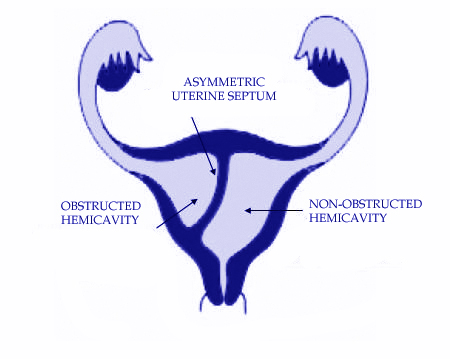
What is a Robert Uterus?
A Robert uterus, also known as a septate uterus, is a congenital uterine anomaly characterized by a septum or wall of tissue dividing the uterus into two separate cavities. This condition can affect a woman's reproductive health and increase the risk of pregnancy complications.
Causes of a Robert Uterus
A Robert uterus is typically a congenital condition that occurs during fetal development when the Müllerian ducts, which form the female reproductive organs, fail to fuse completely. The exact cause of this developmental anomaly is not always known but may involve genetic or environmental factors.
Symptoms of a Robert Uterus
Many women with a Robert uterus may not experience any symptoms, while others may experience:
- Recurrent miscarriages
- Infertility
- Irregular menstrual cycles
- Abnormal vaginal bleeding
- Pain during menstruation or intercourse
Diagnosis of a Robert Uterus
A Robert uterus is typically diagnosed through:
- Imaging studies: Ultrasound, magnetic resonance imaging (MRI), or hysterosalpingography (HSG) may be used to visualize the uterus and identify any structural abnormalities.
- Hysteroscopy: A minimally invasive procedure in which a thin, lighted scope is inserted through the cervix to examine the inside of the uterus and identify any septum or abnormal tissue.
Treatment of a Robert Uterus
Treatment for a Robert uterus depends on the severity of the condition and the woman's symptoms and reproductive goals. Treatment options may include:
- Hysteroscopic septum resection: Surgical removal of the uterine septum to create a single, normal-sized uterine cavity, which may improve fertility and reduce the risk of pregnancy complications.
- Fertility treatments: In some cases, assisted reproductive technologies such as in vitro fertilization (IVF) may be recommended to help achieve pregnancy.
What are the procedure after surgery?
Rest and Limit Activity : Avoid strenuous activities, heavy lifting, and vigorous exercise for the recommended period.
Keep the Area Clean : Gently clean the surgical area with water and mild soap as directed by your surgeon. Pat the area dry with a clean towel, and avoid rubbing or scrubbing.
Take Prescribed Medications : Take any prescribed pain medications, antibiotics, or other medications as instructed by your surgeon to manage pain and prevent infection.
Avoid Sexual Activity : Refrain from sexual intercourse and other sexual activities until your surgeon advises it is safe to do so. This typically takes several weeks to a month or more, depending on individual healing.
Wear Loose Clothing : Wear loose-fitting clothing, preferably cotton underwear, to minimize friction and promote airflow to the surgical area.
Attend Follow-Up Appointments : Keep all scheduled follow-up appointments with your surgeon to monitor your healing progress and address any concerns or complications promptly.
Avoid Tampons and Menstrual Cups : Refrain from using tampons and menstrual cups during your recovery period to prevent irritation and infection.
Stay Hydrated and Eat Nutritious Foods : Drink plenty of water and eat a balanced diet rich in vitamins and nutrients to support healing and boost your immune system.
Why Choose VMG Hospital for Robert Uterus Treatment?
VMG Hospital in Hisar, Haryana, offers expert care and advanced treatment options for women with a Robert uterus. Our team of experienced gynecologists, reproductive endocrinologists, and fertility specialists is dedicated to providing personalized care and support to address the unique needs of each patient. With state-of-the-art facilities, minimally invasive surgical techniques, and a patient-centered approach, VMG Hospital is committed to helping women achieve their reproductive goals and improve their overall health and well-being.